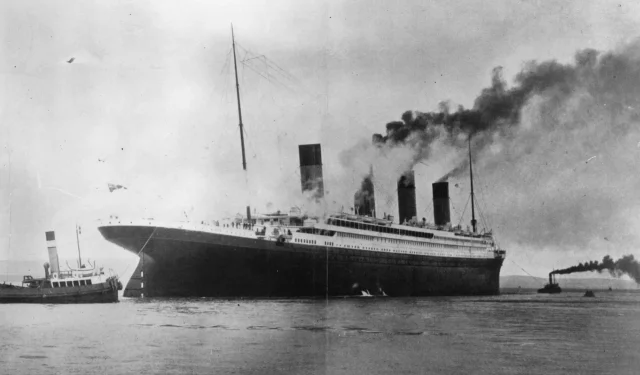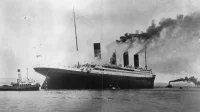The Enduring Legacy of the Titanic: A New Digital Resurrection
The R.M.S. Titanic is a name that continues to capture public imagination, even as it rests at the depths of the North Atlantic Ocean, almost 113 years after its tragic sinking. This April 14 marks not only the anniversary of the ill-fated voyage but also a significant milestone in the ongoing exploration of its legacy, with the release of a groundbreaking documentary by National Geographic.
Innovative Technology Meets Titanic History
On April 8, 2023, National Geographic and Atlantic Productions unveiled the trailer for Titanic: The Digital Resurrection, a 90-minute documentary directed by Anthony Geffen. The film promises to offer a detailed look at the Titanic using cutting-edge underwater scanning technology, boasting “exclusive access to over 715,000 digitally captured images”that create a full-scale, 1:1 digital replica of the ship, accurate to the rivet.
This stunning technological advancement has been made possible by Magellan, a company specializing in deep-sea mapping and engineering. The Titanic lies approximately 12,500 feet beneath the ocean’s surface—a depth that presents significant challenges for underwater exploration. For perspective, it was at a depth of over 10,000 feet that the Titan submersible tragically imploded earlier this year.
Data Collection: The ROV Experience
Utilizing Remotely Operated Vehicles (ROVs) named “Romeo” and “Juliet,” the team was able to gather a staggering 16 terabytes of data over a three-week period, which required two years of meticulous analysis. The documentary features prominent experts such as Titanic analyst Parks Stephenson, metallurgist Jennifer Hooper, and Master Mariner Captain Chris Hearn. Together, they examine the wreckage closely, employing a colossal LED volume stage to simulate the ship’s original environment.
“From the boiler room where engineers worked valiantly to keep the lights on until the bitter end, to the first-class cabins where the ship ripped in two, the scan brings them face-to-face with where the tragedy unfolded.”
New Discoveries from the Wreckage
Among the significant revelations from this research is the discovery of an open steam valve, which may support accounts that engineers remained at their posts for over two hours after the iceberg collision, enabling the transmission of distress signals. This detail adds a heroic dimension to the narrative surrounding those who faced imminent danger during the Titanic’s last moments.
Furthermore, new assessments reveal that the ship’s hull did not split cleanly but was violently torn apart, impacting the first-class cabins where notable passengers such as J.J. Astor and Benjamin Guggenheim likely sought refuge as tragedy struck.
Revisiting the Story of First Officer William Murdoch
The documentary also revisits the contentious legacy of Titanic’s First Officer William Murdoch. Decades later, perceptions of Murdoch as a coward—who allegedly abandoned his post—are being called into question. Recent findings suggest evidence that may exonerate him. The positioning of a lifeboat davit indicates that Murdoch and his crew were preparing to launch a lifeboat moments before the starboard side succumbed to the icy waters, corroborating Second Officer Charles Lightoller’s account that Murdoch was ultimately swept away by the sea.
This new evidence could significantly alter the narrative surrounding Murdoch, whose story has been a subject of intense scrutiny for generations.
Where to Watch
Titanic: The Digital Resurrection premieres on April 11 at 9 PM/8 PM Central on the National Geographic channel, with streaming available the following day on Disney+ and Hulu. Don’t miss the chance to witness this remarkable re-examination of one of history’s most infamous maritime disasters.
To view the documentary’s trailer, click here: Trailer Link
For an even deeper dive into the documentary and its implications, visit: Additional Content Link
The legacy of the Titanic continues to unfold, revealing new insights, technological marvels, and human stories that resonate into today’s culture.


